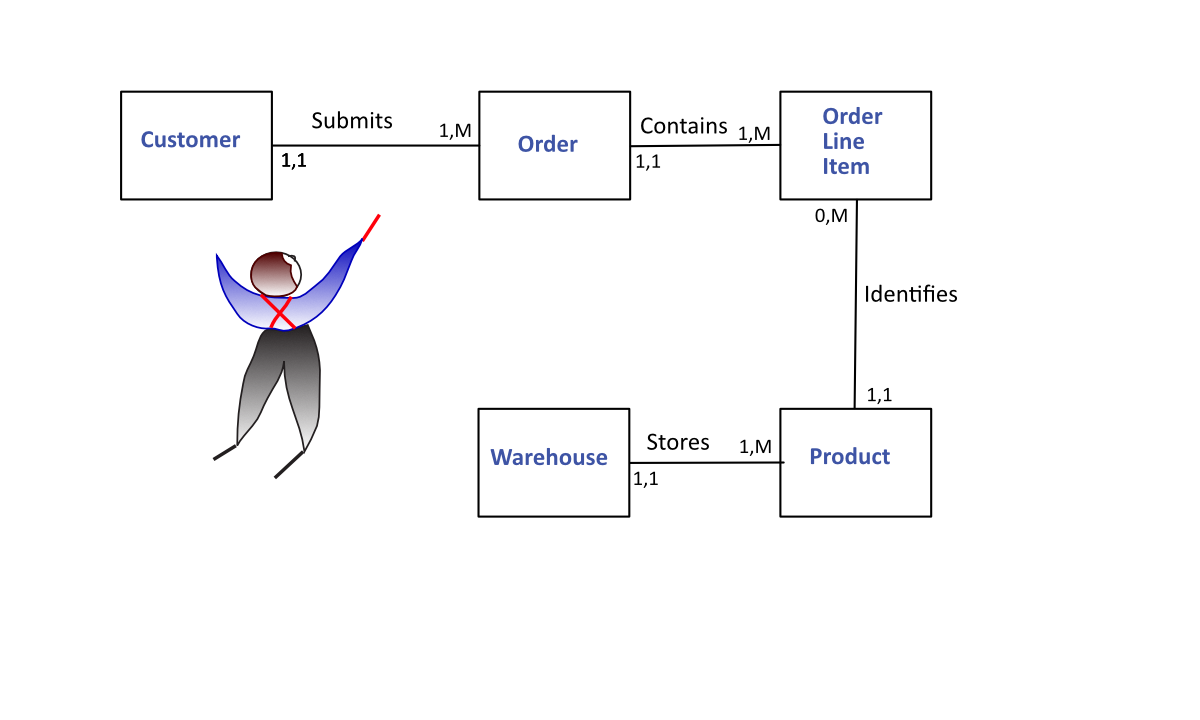April 2024 - The FoCuSeD™ Facilitator eNewsletter

Facilitated Agile Business Data Modeling | Gary Rush, IAF CPF | M
Business Data Modeling is sometimes skipped in Agile projects because of arbitrary sprint time (often 2 weeks) and because data models are often considered ‘requirements’ and Agile projects often jump to design, skipping requirements as unnecessary. This is a mistake. Data projects, e.g., data warehouses, databases, etc., should be separated from process projects (typical Agile projects) and handled differently. However, you can follow Agile concepts when building a data model, taking advantage of Agile.
Following Agile Concepts…
Some basic Agile concepts are useful in Data Modeling, such as:
- Break the project into smaller pieces so that you are not tackling the whole thing at once.
- Deliver product in smaller portions that enable the customer to validate and adjust as you move forward.
- Always include the customer.
Removing the word ‘software’ from Agile allows you to deliver data models and data warehouses in the same manner as traditional Agile projects. You take advantage of the Agile concepts making the data more useful. The core concepts are sound, just build a data model using 1- to 2-month sprints instead and deliver the model instead of software.
Applying Agile to Data Modeling...
Know the business– ‘what’ it does. Data is key to understanding the business (see my LinkedIn Post “Building a Data Warehouse following Agile Concepts”). Data Modeling does just that. So, to apply the Agile concepts to Data Modeling…
- Don't skip documentation, just do what is needed to make sense. Excessive paperwork doesn't add value. Keep the Data Dictionary simple and useful.
- Break work into doable chunks, ignore arbitrary sprint lengths; use common sense instead. Data projects tend to require sprints of 1 to 2 months - far better than 6 months or more. Partition the model into subject areas and complete the subject areas one at a time. Begin with the subject area that is core to the business being modeled.
- Deliver the core subject area model product, work with it, adjust if needed, then deliver the next subject area enabling constant delivery and adjustment. Delivering data projects in subject area segments allows for validation and adjustment as you move forward.
- Always include the customer. All Business Data Models must be built in workshops that include the business.
- Use facilitated workshops. This engages the team and customer appropriately without having to remove them from the business.
The Workshops…
To facilitate business data modeling following Agile, do the following:
- In an in-person workshop, have the key stakeholders develop the initial Business Data Model. Focus on completing the core entities of the model,, e.g., if it's a model of insurance claims, define the entities directly related to 'claim'.
- After the workshop, partition the model into subject areas containing 6 to 15 entities, e.g., for insurance claims, subject areas may be:
- Claim
- Insured / claimant
- Policy
- Facilitate each subsequent subject area via a virtual workshop if desired. Use Visio, erwin, or Lucid Chart and share in the window so that the participants can see it clearly.
- Complete the data dictionary (document of the definitions of the entities, attributes, and business rules) virtually in short meetings reviewing and refining the definitions and business rules.
- Consider facilitating the final workshop in-person to close the circle with the team and ensure that the model is clearly understood by all.
Why does this work?
By using facilitated workshops and completing one subject area at a time, the business can adjust what data is needed, what reporting is needed, and the final scope. The initial build can be quick, say in a matter of a month or two. Additional subject areas can be added every month until all are included. That avoids waiting until the entire model is complete and all the data is completely defined before using it. By building the Business Data Model piece by piece in facilitated workshops, the business can take advantage of what is completed while adding more, making the data more useful to them. Starting with the business model ensures that the business receives good data and better information.
Gary Rush, IAF CPF | Master both facilitates Agile Business Data Modeling as well as teaches 'how to' facilitate Agile Business Data Modeling in his 4-day FoCuSeD™ Facilitator Academy and in his 2-day FoCuSeD™ Business Data Modeling class.

